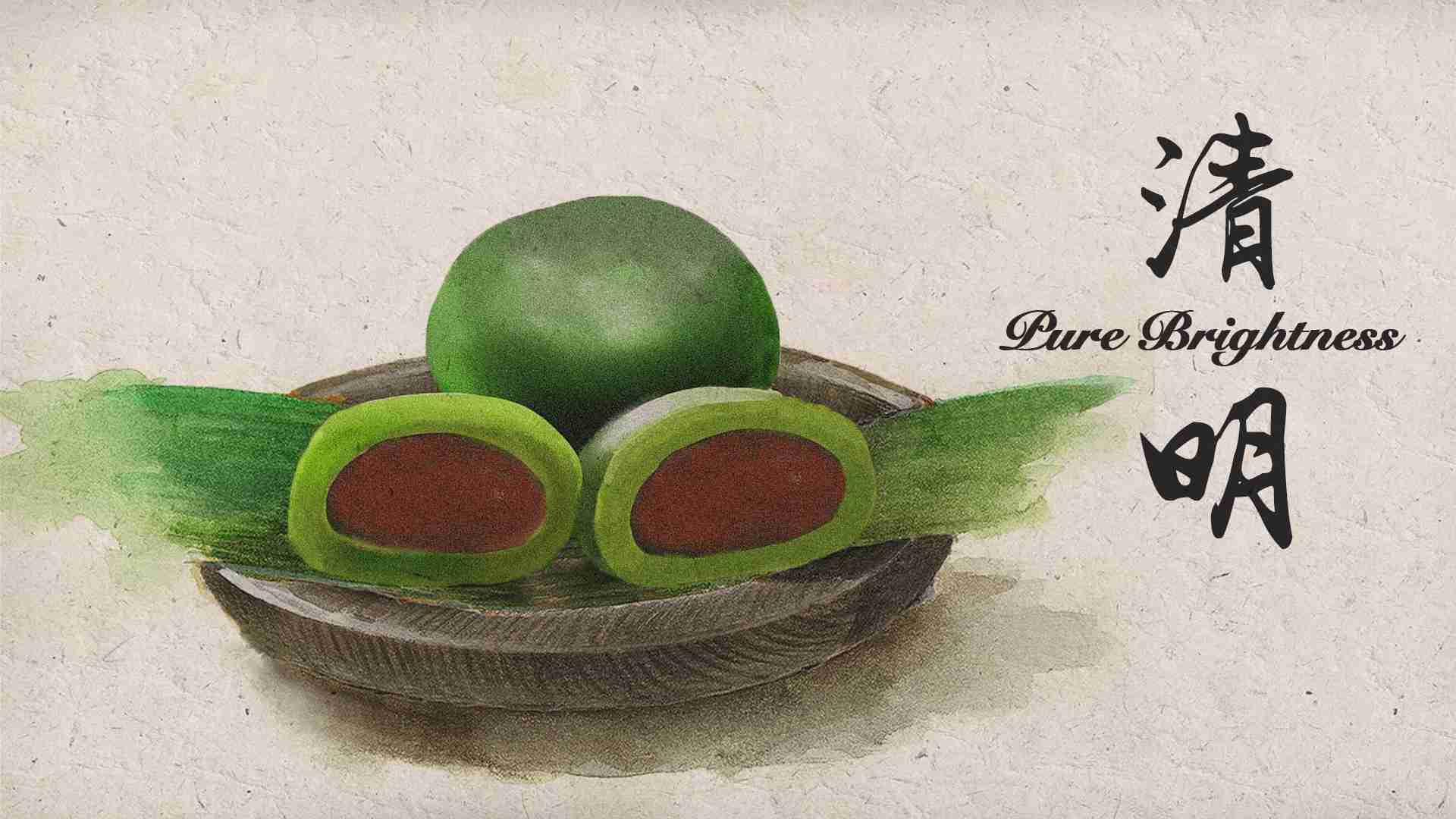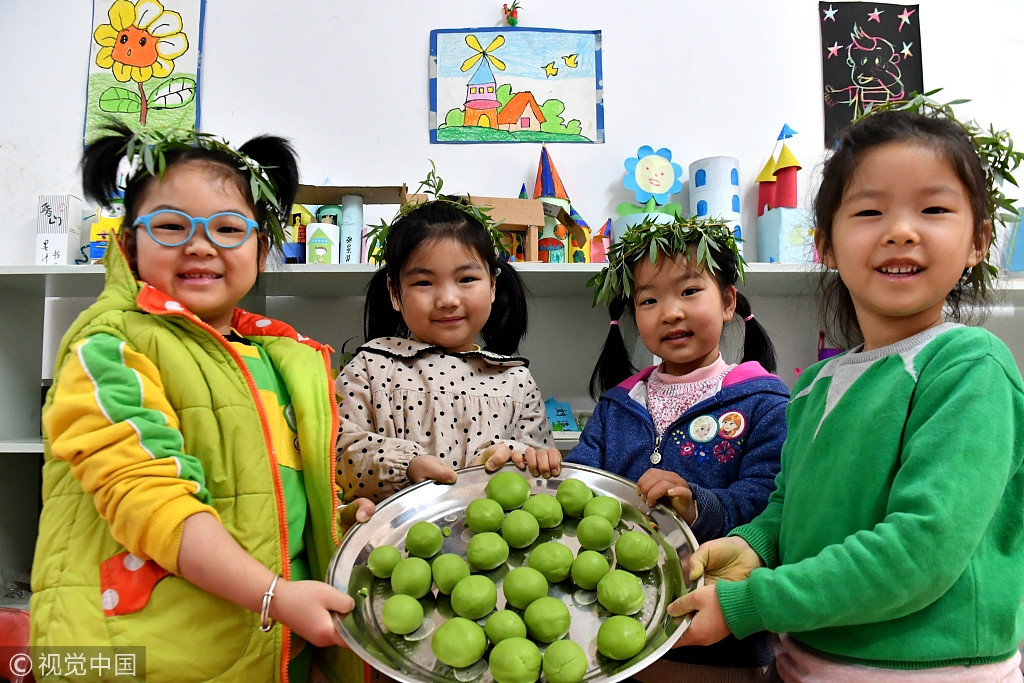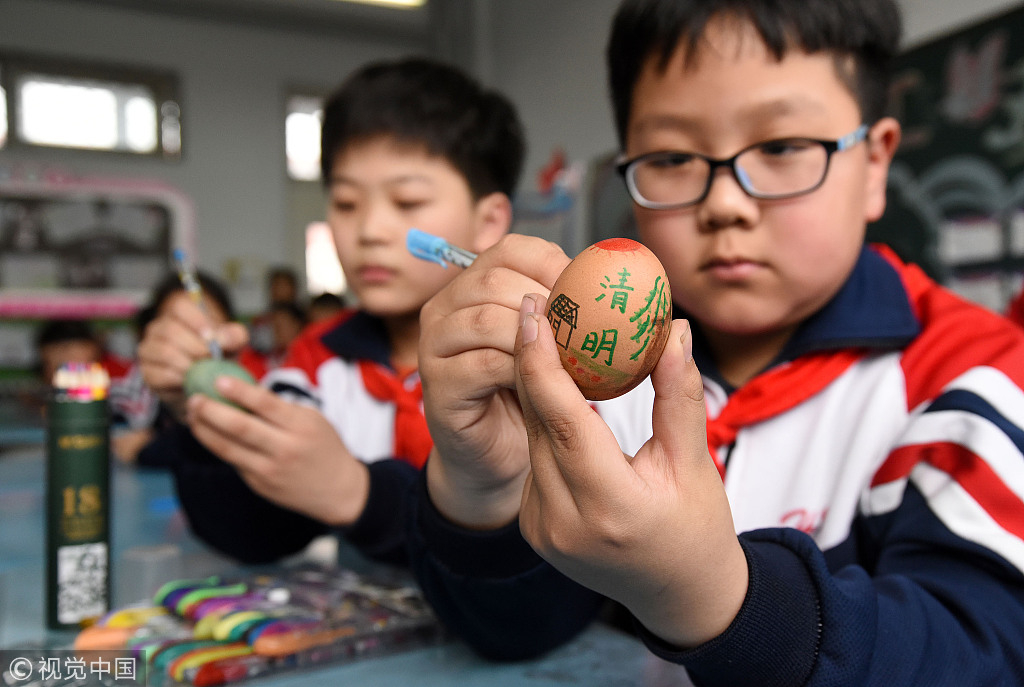
Culture China
09:29, 05-Apr-2019
Pure Brightness: Taste the sweetness of spring with a bite of qingtuan
Updated
16:13, 05-Apr-2019
By Jiang Qingrui
03:47

Pure Brightness or Qingming, one of the 24 Solar Terms on the Chinese lunar calendar, begins on April 5 this year. The day is also known as the traditional Tomb-sweeping Day in China. This is the only occasion which marks the dawn of a new solar term as well as a traditional festival.
Coming at a time between mid-to-late spring, the day usually features a lovely landscape of green and vigor – trees extend their sprouts, flowers blossom, birds chirp, and ducks come out to soak up the sun.
The name, Pure Brightness, is a vivid reflection of the warm sunshine and clear winds of the springtime.

An illustration of the spring scenery during Pure Brightness or Qingming. /VCG Photo
An illustration of the spring scenery during Pure Brightness or Qingming. /VCG Photo
In China, it's a tradition to sweep the tombs of loved ones. People also visit memorials to pay homage to national heroes and martyrs who sacrificed their lives for the good of the nation.
But it doesn't mean the day is all about sorrow. It's also a tradition to go on trips to the countryside or parks and enjoy the beautiful spring scenery.
The perfect match: Pure Brightness and 'green dumpling'
In a season when the most dominant color is green, you can't miss trying the "green dumpling"! It is made of glutinous rice mixed with Chinese mugwort, stuffed with red or black bean paste. We call it qingtuan.
Spring is an ideal time to eat mugwort, when the plant is fresh and tasty. Qingtuan has also become a delicacy especially associated with the season.

Kindergarten students pose during an activity to make qingtuan in Hefei, east China's Anhui Province, April 3, 2019. /VCG Photo
Kindergarten students pose during an activity to make qingtuan in Hefei, east China's Anhui Province, April 3, 2019. /VCG Photo
However, since mugwort is not always available, people also use other plants and vegetables, like barley grass and spinach. The stuffing also varies. Apart from the sweet ones stuffed with bean paste, there are salty ones filled with radish, meat, and bamboo shoots. In recent years, chocolate and ice cream fillings have also become popular among the youth.
In this top video, we have filled the dumplings with bean paste and used spinach to color the dough.
The procedure is simple. Put the spinach in boiling water and grind the leaves, add rice flour and glutinous rice flour and knead the mixture. Divide the dough into pieces of the same size. Stuff each balls with red bean paste and steam the dumplings for 10 minutes. And your qingtuan is ready!
Other typical foods for Pure Brightness
Similar to qingtuan, there are various other festive delicacies. In east China's Fujian Province, Hakka people make "Aiban," which is cooked with a similar method but looks more like a cake. Some people in east China's Jiangxi and Zhejiang provinces make "Aijiao", with a dumpling-like appearance.
Eggs are also associated with the day. Some areas also follow the tradition of egg painting and sculpturing.

Students painting eggs for Pure Brightness in Handan, north China's Hebei Province, April 3, 2018. /VCG Photo
Students painting eggs for Pure Brightness in Handan, north China's Hebei Province, April 3, 2018. /VCG Photo
If you go for a trip to enjoy the lovely spring scenery today, don't forget to take the unique Qingming snack with you!
Director: Jiang Qingrui
Video Editor: Jiang Qingrui, Huang Chenchen
Videographer: Ma Jian
Designer: Du Chenxin
Copy Editor: Henry Zheng, Khushboo Razdan
Chief Editor: Wang Dewei

SITEMAP
Copyright © 2018 CGTN. Beijing ICP prepared NO.16065310-3
Copyright © 2018 CGTN. Beijing ICP prepared NO.16065310-3